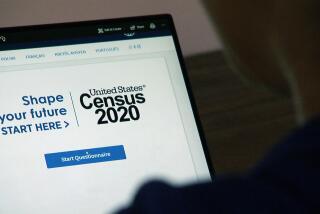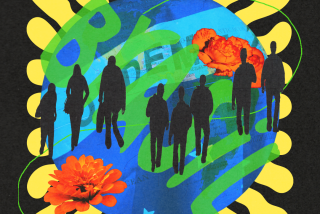Brazil Tries Quotas to Get Racial Equality
- Share via
RIO DE JANEIRO — Black activists are trying a new weapon in their quest for racial equality in deeply divided Brazil: little white flowers.
The white camellia has become a seal of approval that the Center for Articulation of Marginalized Peoples will award to stores, companies and schools that hire, promote and enroll black people.
“We’re going to show that no one profits from racism,” said the group’s leader, Ivanir dos Santos. “In a country with a big black population like Brazil, this will be an important factor.”
Nearly half of Brazil’s 178 million people are descendants of blacks from Africa. If they can be encouraged to start speaking with their pocketbooks, they will be hard to ignore, activists say.
Racial unity has long been elusive in Brazil. Although the country projects an image of tolerance and equality, people with lighter skin hold the bulk of the nation’s wealth and power.
Only over the last decade has a small but increasingly vocal black movement begun demanding benefits such as racial quotas for universities, contracts, employment and even television and films, where blacks rarely appear.
Public policies to accommodate those demands are newer still.
Last year, three state universities began implementing a system of racial quotas and several more are following suit this year.
Even in their limited form, quotas have stirred up a fuss, challenging the oft-stated belief that Brazil is a “racial democracy.”
“Before the quotas, nobody even talked about discrimination. The quotas open the question up so society can see what’s really happening,” said Joao Gilberto de Sa Jesus, 21, a premed student admitted to Rio de Janeiro State University under the quota system.
On the other side, the quotas have brought a slew of lawsuits from white students claiming discrimination.
Paulo Fabio Salgueiro, director of admissions at Rio de Janeiro State University, argues that quotas have had little practical effect beyond stirring up racial tension.
The university set aside 40% of last year’s freshman class for black or mulatto students. But only 243 out of a class 4,970 benefited, Salgueiro said, meaning that only around 5% of the class owed their admission to quotas.
“The blacks who got in were mostly those who would have gotten in anyway because of their test scores,” Salgueiro said. “They were the ones who had enough money to pay for private high schools.”
Addressing that issue, state legislators are now requiring quota-benefiting students to prove that their families earn no more than about $100 a month.
But Salgueiro worries that the quotas may be doing more harm than good.
“The quotas are trying to create a Brazilian middle class and that’s good,” he said. “On the other hand, could it be that we’re importing a solution to a strident racism that never existed here?”
Complicating matters, in Brazil, it’s not always clear who is black and who is not.
Michely Wada, 21, was admitted to the state university’s premed program after declaring that she was mulatto, but her long straight hair and her eyes owe more to her mother’s Japanese descent than anything else.
“When I was a kid, my nickname was ‘little monkey’ because my father is black. That’s just the way Brazil is,” Wada says, justifying her decision to list herself as mulatto on her application.
Still, Salgueiro says, about 14% of the students who listed themselves as black or mulatto before quotas were introduced changed their racial designation to white so as not to qualify, apparently believing that they would be stigmatized by being admitted to college under quotas.
Brazil’s schizophrenia on race goes back to the colonial era.
Unlike the English, Portuguese settlers generally did not bring women with them and the offspring that resulted from their mating with indigenous women and slaves from Africa created the rich tapestry of skin tones visible in Brazil today.
“In the United States, you have the one-drop rule. If you have one drop of black blood, you are black. Here it’s the opposite,” dos Santos said. “If you have one drop of white blood, you’re anything but black.”
Because of this, census takers have documented about 300 separate racial classification ranging from “sour milk” to “bamboo brown” to “blue.” Only 6.2% of Brazilians consider themselves “black,” although that is up from 5% a decade ago.
This racial mixing led to the oft-stated belief among Brazilians that if every one is mixed, there can be no racism.
But in Brazil, poverty and blackness usually go hand in hand. Although 46% of the population are officially black or mulatto, they account for 65% of the poor.
Just 22% of employers are black or mulatto and, at companies with more than five employees, the figure is 12%. Only 2.9% of Brazilians with university degrees are of African descent.
A study conducted by Marcelo Paixao, an economics professor at the Federal University of Rio de Janeiro, said that by the standards of the U.N. Human Development Index, white Brazilians live in one of the most developed countries in Latin America, while blacks live in the poorest.
“This contradicts the idea that Brazil doesn’t have racism. Just because we didn’t have segregation doesn’t mean there is equality,” Paixao said. “It shows how much we have to advance, and these issues are only being discussed publicly over the last five years.”
More to Read
Sign up for Essential California
The most important California stories and recommendations in your inbox every morning.
You may occasionally receive promotional content from the Los Angeles Times.










